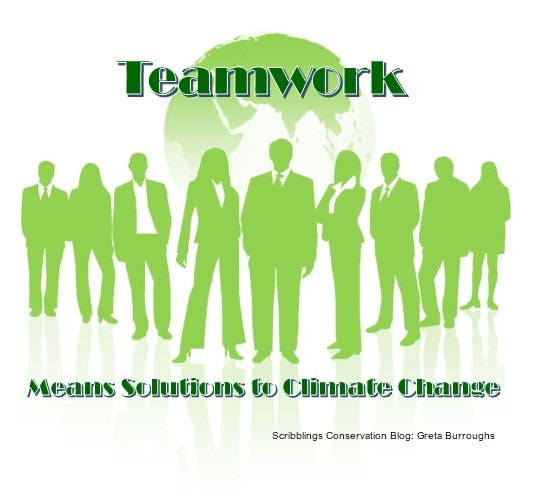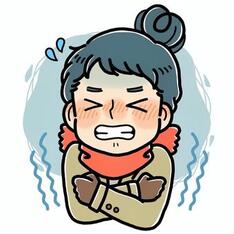
It’s absolutely amazing how bees, butterflies, beetles, birds, bats, and other creatures evolved to know what to do instinctively. The changing seasons trigger a conditioned response. Songbirds migrate south. Raptors also fly south, where food sources are more plentiful. Insects carve out nesting spots in trees and vegetation or tunnel under the soil to stay out of the elements. Amphibians, reptiles, turtles, and mammals also burrow underground or sleep the winter away in earthen shelters. Wooly bears and some species of frogs can turn into ice cubes and thaw in spring.
Spoiled dogs like mine have it made. Even though he has his winter coat, my four-legged companion is curled up snoozing in front of the heater, leaving his spot only when forced to by me, hunger, or a full bladder. He doesn’t realize how lucky he is.
Should I feel sorry for the birds, deer, squirrels, rabbits, and coyotes that are out and about roaming around the countryside, braving the cold temperatures and precipitation? What unique traits has Mother Nature programmed into them to combat the frost, ice, snow, sleet, and cold Jack Frost throws their way? How do they keep from turning into furry or feathered blocks of ice?
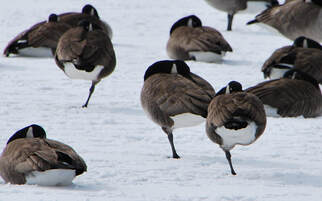 You know it's cold outside when you see one-legged Canada geese.
You know it's cold outside when you see one-legged Canada geese. Birds pack on body weight in the late summer and fall in anticipation of the long, cold winter. They have a high metabolic rate, burning lots of energy to stay warm. They keep active by flitting around, and like humans, they shiver when stationary. It’s a good thing they can remember where their food stores are hidden because they need lots of them. A Chickadee eats more than 35% of its body weight every day.
Our avian friends are well-insulated. Their feathers trap pockets of air around their bodies, keeping them warm. In addition, all birds weatherproof the top layer of their feathers by secreting oil, and waterfowl such as egrets, herons, and mourning doves grow special feathers that disintegrate into a powder used to waterproof their inner feathers.
Ducks, geese, pelicans, gulls, and swans further conserve body heat by standing on one leg or even sitting down and tucking their bills under their back feathers.
Smaller, and even some species of larger birds, crowd together to share body heat. Cavity nesters use tree hollows and nest boxes to stay warm, dry, and safe from predators.
Deer
Deer and other large mammals such as elk, moose, caribou, and buffalo have a lovely thick coat that keeps them warm and toasty. Their outer coat repels water while their furry undercoat insulates them and prevents body heat from escaping.
Deer have special muscles that help adjust the angle of their hair for maximum insulation. Plus, the gray-brown color absorbs the sun’s warmth. This system works so well they don’t feel the cold.
As far as food is concerned, they consume as much as possible during the autumn. A deer can lose up to 30% of its body weight during the winter, and the fat stores help it to survive. To preserve their energy, deer limit their exploring to the warmer hours of the day and bed down at night. They take advantage of natural shelters and congregate under trees and brush that shield them from the elements. Sticking together in groups also protects from predators.
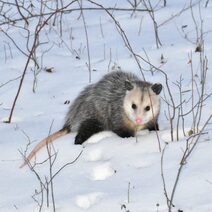 Any early ancestor to the possum must have really ticked off Mother Nature. They are one of only animals that don't sport a heavy winter coat and have a hairless tail and ears that Jack Frost loves to nip.
Any early ancestor to the possum must have really ticked off Mother Nature. They are one of only animals that don't sport a heavy winter coat and have a hairless tail and ears that Jack Frost loves to nip. Coyotes serenade us year-round with their haunting cries. One summer, we were fortunate to have a family living within binocular range of our home. Not wanting to disturb them, we sat in the car and watched as the adults left the den and went hunting in the evenings. The fields offered them an endless bounty of mice and insects to feast upon. They’re beautiful creatures and did us a friendly service by reducing the rodent population.
I was surprised to read that coyotes are more active in the winter than other wildlife. They prefer to sleep outside in a protected hollow or beneath an overhang rather than in a den. Young coyotes strike out on their own, and winter is also mating season. It’s a busy time.
Small animals such as possums, skunks, and raccoons hunker down in dens during the winter and poke their noses out when the temperatures are not too cold. Unfortunately, the poor possums have no luck at all. They usually den by themselves and if not careful, can get frostbite on their hairless ears and tails.
Rabbits, mice, voles, and squirrels are hardy critters who have mastered the art of thriving in the bitter cold. These wild mammals grow thick coats to keep the chill out and eat as much as possible, while fruits and nuts are plentiful.
Squirrels, mice, and voles hide caches of food for those long, lean days when food is scarce. Smaller animals lose heat faster than larger ones, so while active, they must burn fat faster to keep warm. That’s also why they stay put in their underground lair during the coldest days.
Instead of relying on emergency rations, rabbits forage for ground-level plants, twigs, and bark to sustain them until spring. They also eat their own poop.
I guess it’s unnecessary to worry about the wild things during the winter. Heck, they seem to handle it much better than I do. Nevertheless, I enjoyed researching this stuff. The more I know about the creatures with whom I share this world, the more I appreciate them.

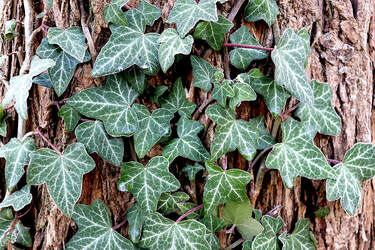
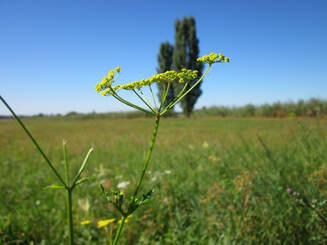


 RSS Feed
RSS Feed

